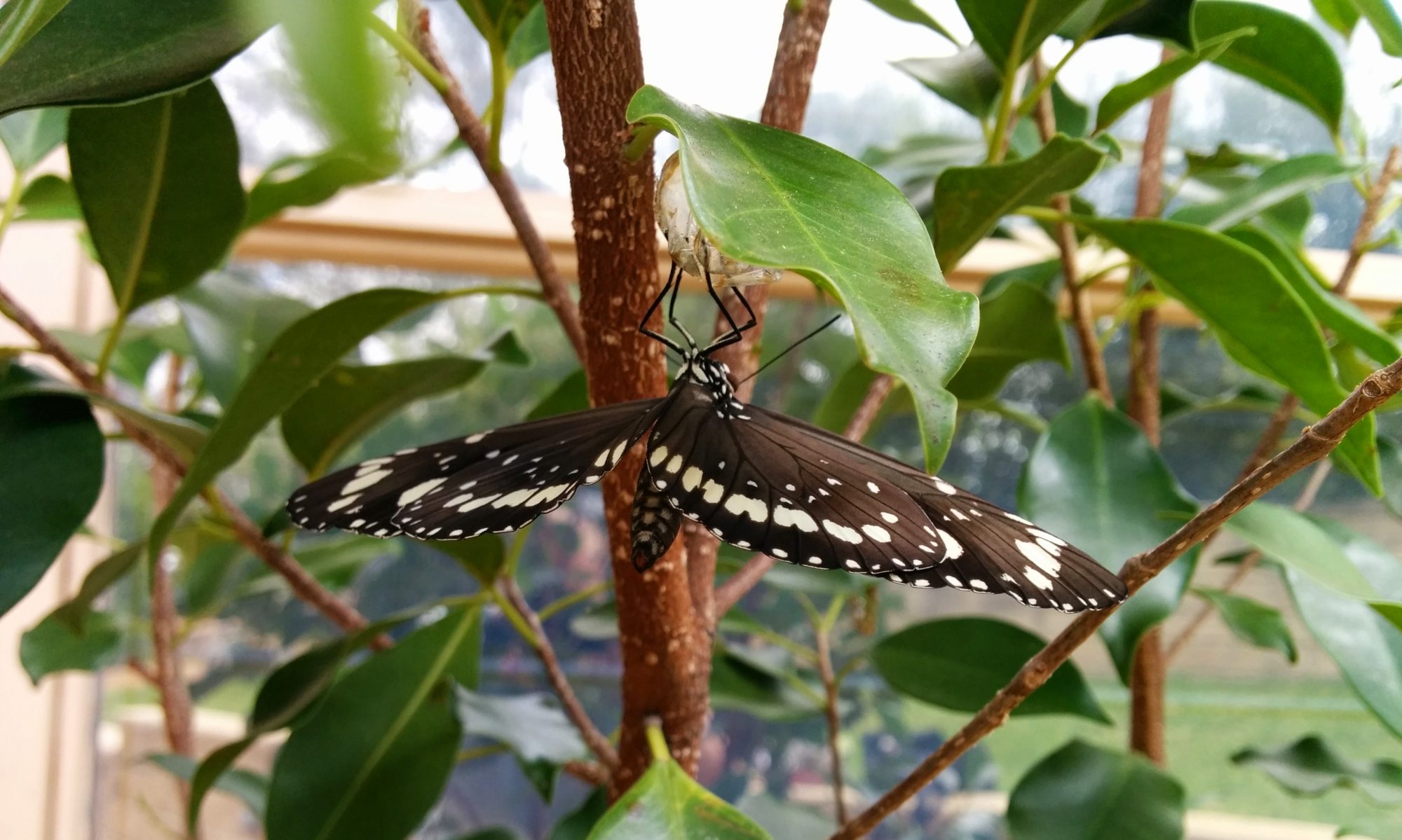Eromanga, Australia’s furthest town from the sea, used to be at the bottom of a shallow sea. About 110 million years ago a shallow sea covered what is now arid inland Australia. Australia’s most beautiful and complete fossils of this period are of the spectacular marine creatures that lived in this cold sea.
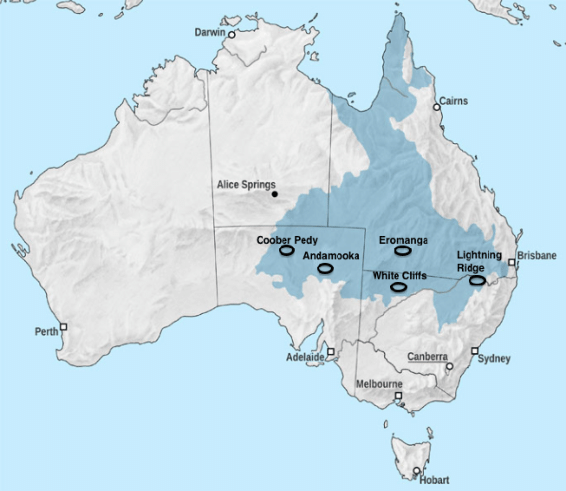
The ocean flooded the lowered land, forming the Eromanga Sea. The inundation lasted for million years, and left its marks. This area is now famous for opals and many opalized fossils of marine creatures have also been found. The layers of marine sandstone were formed at the bottom of the Eromanga Sea forming a confining rock layer that over time created the Great Artesian Basin.
Eromanga Sea Fossils
Kronosaurus
Kronosaurus queenslandicus is a sort of large short-necked marine reptile called a pliosaur. Kronosaurus was the largest known pliosaur . It is estimated that Kronosaurus was 8 – 12 metres long, which is about the size of a bus. These huge marine carnivores lived in the Eromanga sea during the Mesozoic hunting large fish, invertebrates such as giant squid and ammonites.
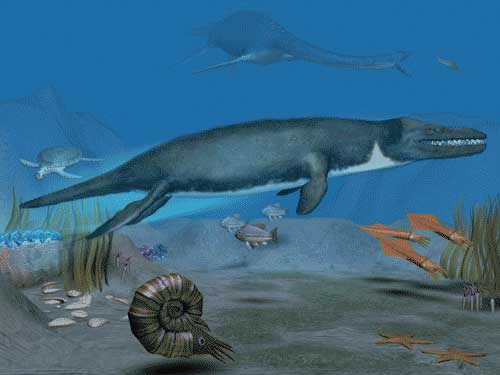
Ichthyosaurs
Ichthyosaurs are reptiles even through they looked like dolphins. Ichthyosaurs swam by moving their tails from side to side in the way fish do and not up and down like whales and dolphins, which are mammals.
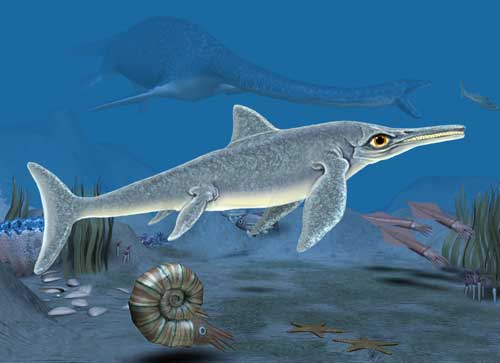
Ichthyosaur have been found in the Eromanga Sea and according to the fossil remains might have used to the southern reaches as a breeding ground.
Image© Oz Fossils ACB Science
Turtles
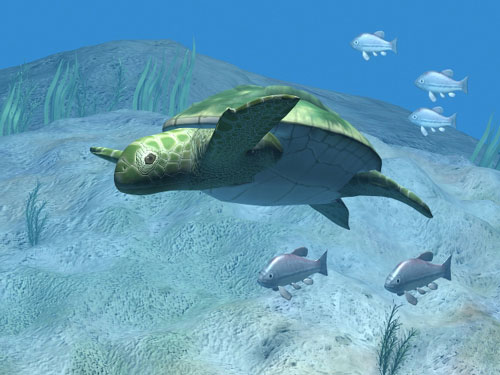
One of the commonest marine animals in the Eromanga Sea was a turtle called Nothochelone costata. They were very like the turtles of today and reached about a metre in length. They are the great survivors from the era.
Image© Oz Fossils ACB Science
Ammonites
Ammonites are cephalopods related to present day squid. Ammonites came in a range of shapes and sizes from the truck tyre sized Tropaum imperator to some species the size of a garden snail. Their fossils very common and are used as index fossils to help date other fossils that are found with them. Ammonites became extinct along with the dinosaurs and marine reptiles 65 million years ago,
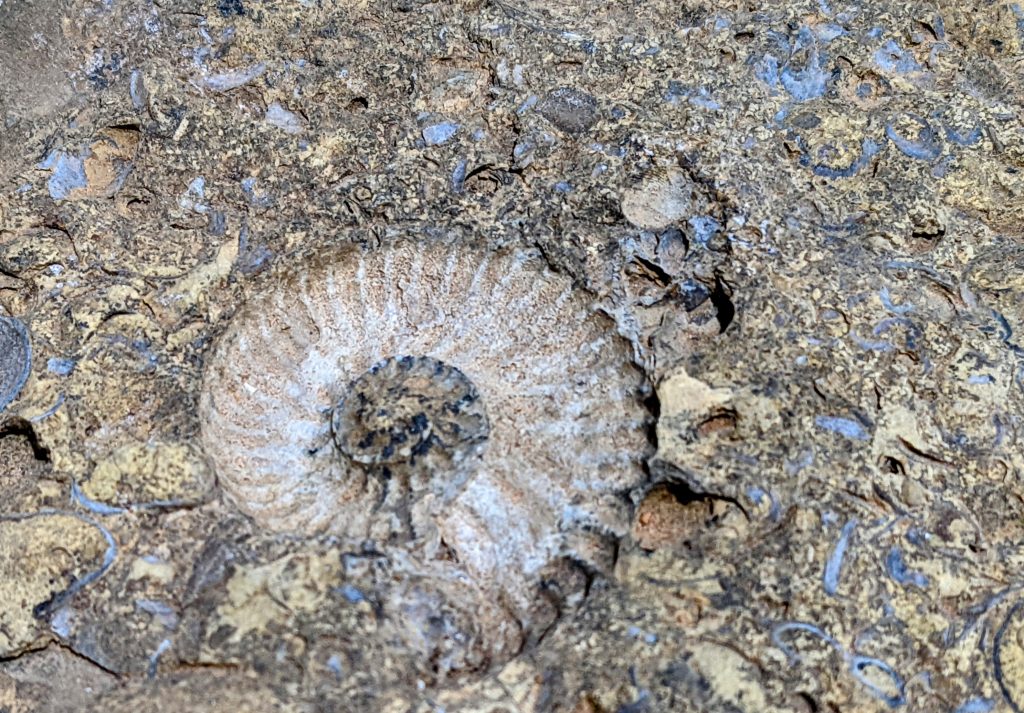
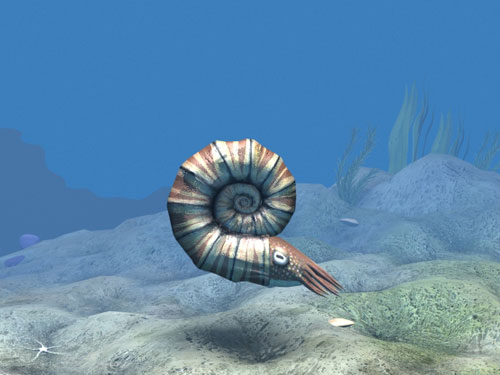
Belemnites
Belemnites were squid-like animals that looked like cuttlefish and became extinct along with the dinosaurs 65 million years ago. They were carnivores that ate fish and any other marine creatures they could catch. They had hooks on their tentacles and could move fast by using jet propulsion. They might have lay in wait among seaweed or rocks and darted out to catch passing fish.
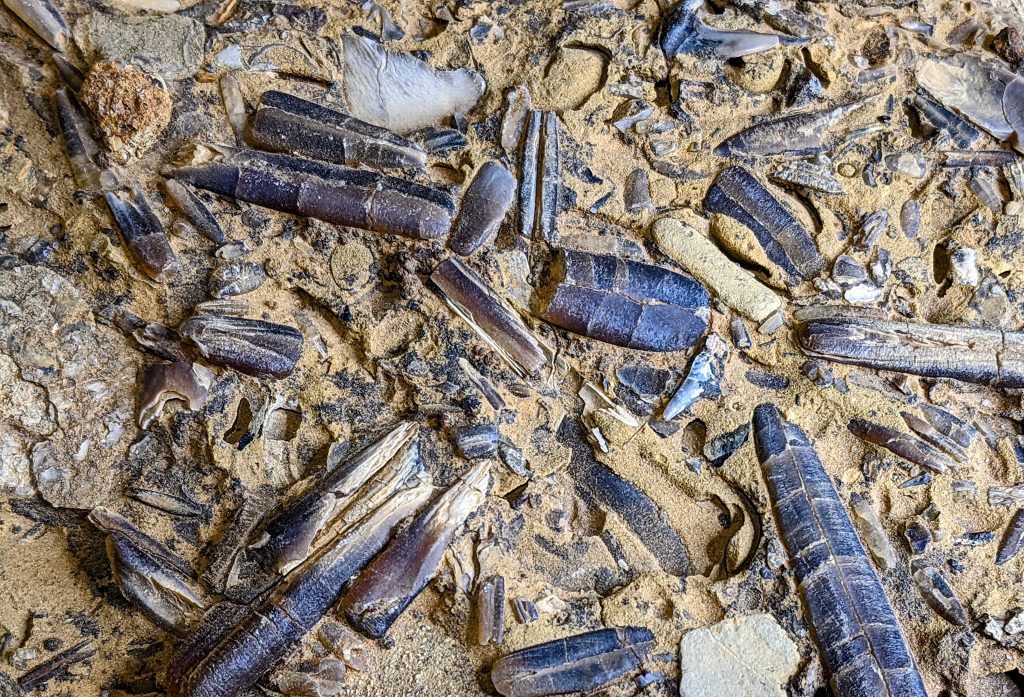
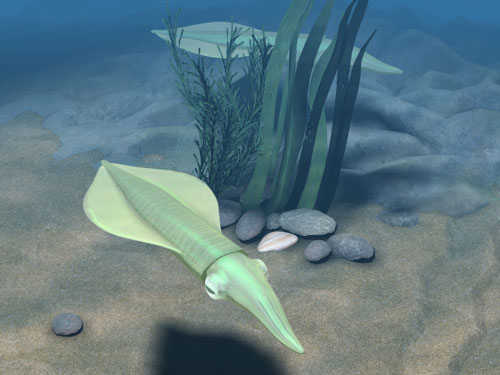
Starfish, shells and crinoids
Crinoids, or sea lilies, are not as common today as they were 100 million years ago. Like starfish, they are one of a large group of sea creatures called echinoderms.

